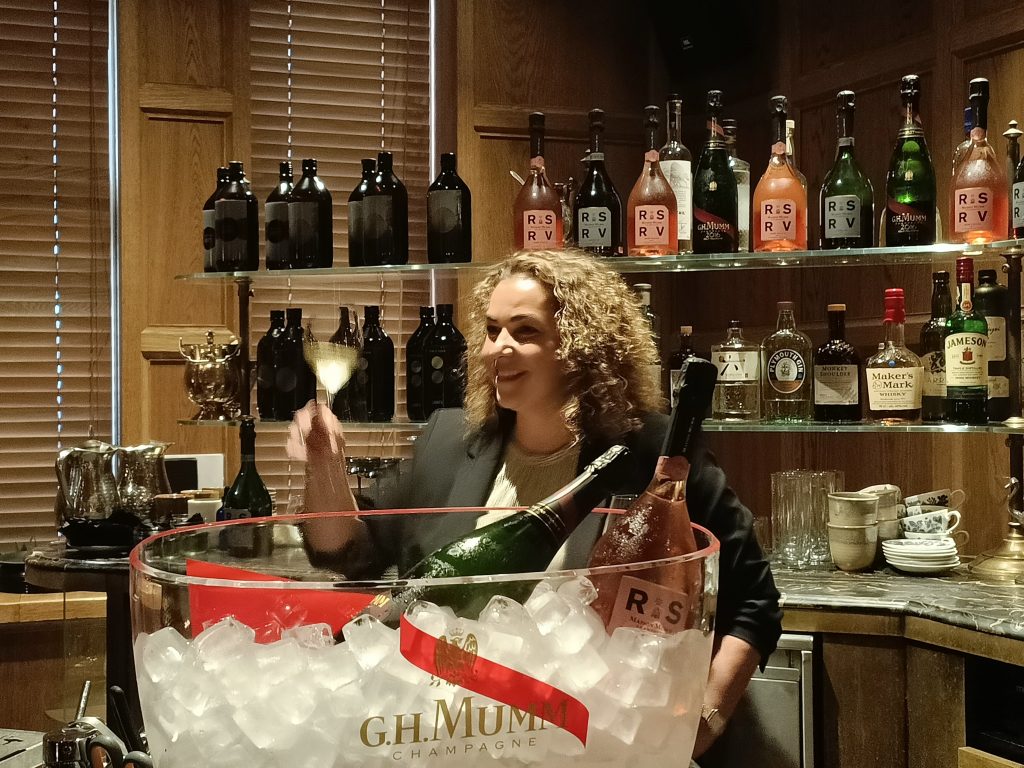G.H. Mumm: ‘non-malo is an opportunity’ in fight against climate change
Non malolactic wines may prove “an opportunity” for Champagne producers to combat the effect of climate change, according to G.H. Mumm’s oenologist Sabrina Roussell.

Speaking to the drinks business at a Christmas event for G.H. Mumm and RSRV cuvées from the Maison in London last week, oenologist Sabrina Roussel, the winemaking and communication expert at Mumm & RSRV, said that the wine-making team had started to experiment with non-malolactic wines from certain Grand Crus, to compare and contrast these for future cuvées.
Following this year’s harvest, Roussell told db that the team had decided to reserve some tanks of Grand Cru wine that had not gone through malolactic conversion in order to experiment with the blends and potentially make something “different” with cellar master Yann Munier.
“I think we need the freshness in the winery and I love to compose when I make blends with maximum diversity,” she explains.
Although this is not entirely new for the house – some non-malolactic wine is retained to add to the blends, this year it is experimenting with both Pinot Noir and Chardonnay from Grand Cru plots from Verzeney which have been carefully selected to allow for a series of taste comparisons when blending.
“We chose enough tanks to compare with and without as its new for me and for the cellar master,” she said. “When we decided to make non-malo on a few tanks, we tasted the different tanks from say Verzenay and searched for something more creamy, sweet and easy to drink to keep it for non-malo. Something too straight will make the malolactic,” she explained.
It is one parameter that winemakers can use to combat climate change, she noted, particularly to ensure freshness in the glass – although not the only one.
Partner Content
“There are a lot of possibilities in the vineyard, and also more non-malo may help,” she told db. I think that non-malo is a possibility with the changing of the climate, because we can keep the acidity and freshness. But the first way is that work in the vineyard can make a difference”
“Non-malo is an opportunity”
Looking forward, Roussel is planning to create a new cuvée with Munier – “always in the same philosophy” but something with even more complexity.
The harvest at the Champagne house this year started on 11 September and although “the quantity is not as we thought [it would be] as we had less” it is still very good quality, with high acidity (7.8% on average) and a low pH (3.07pH for the cuvée).
Roussell noted that quantity – or lack of it – in the 2024 vintage was not so much of a problem, given the problems facing the overall Champagne market. She argued that given the choice, she would always prefer a high quality vintage over one that had purely quantity.
“We have something very straight, clear with good tension and high acidity – and I really enjoyed the tasting!” she said.
Related news
Strong peak trading to boost Naked Wines' year profitability




